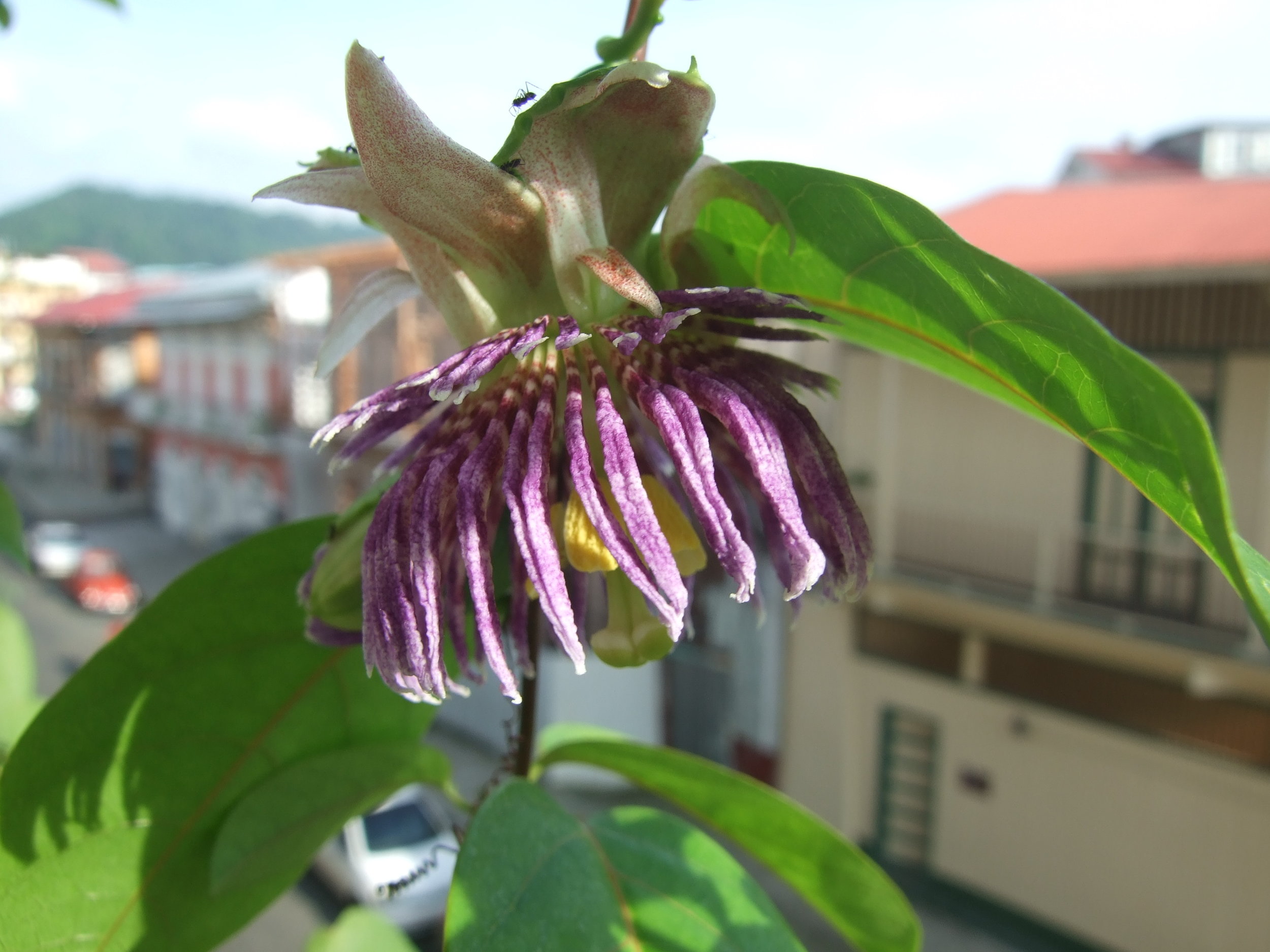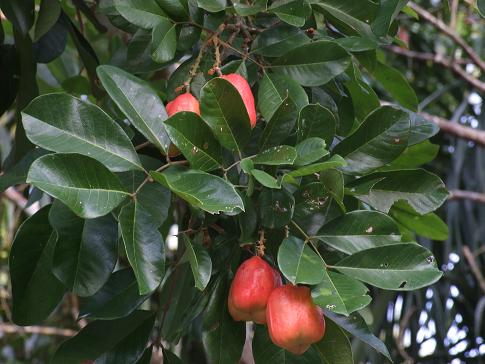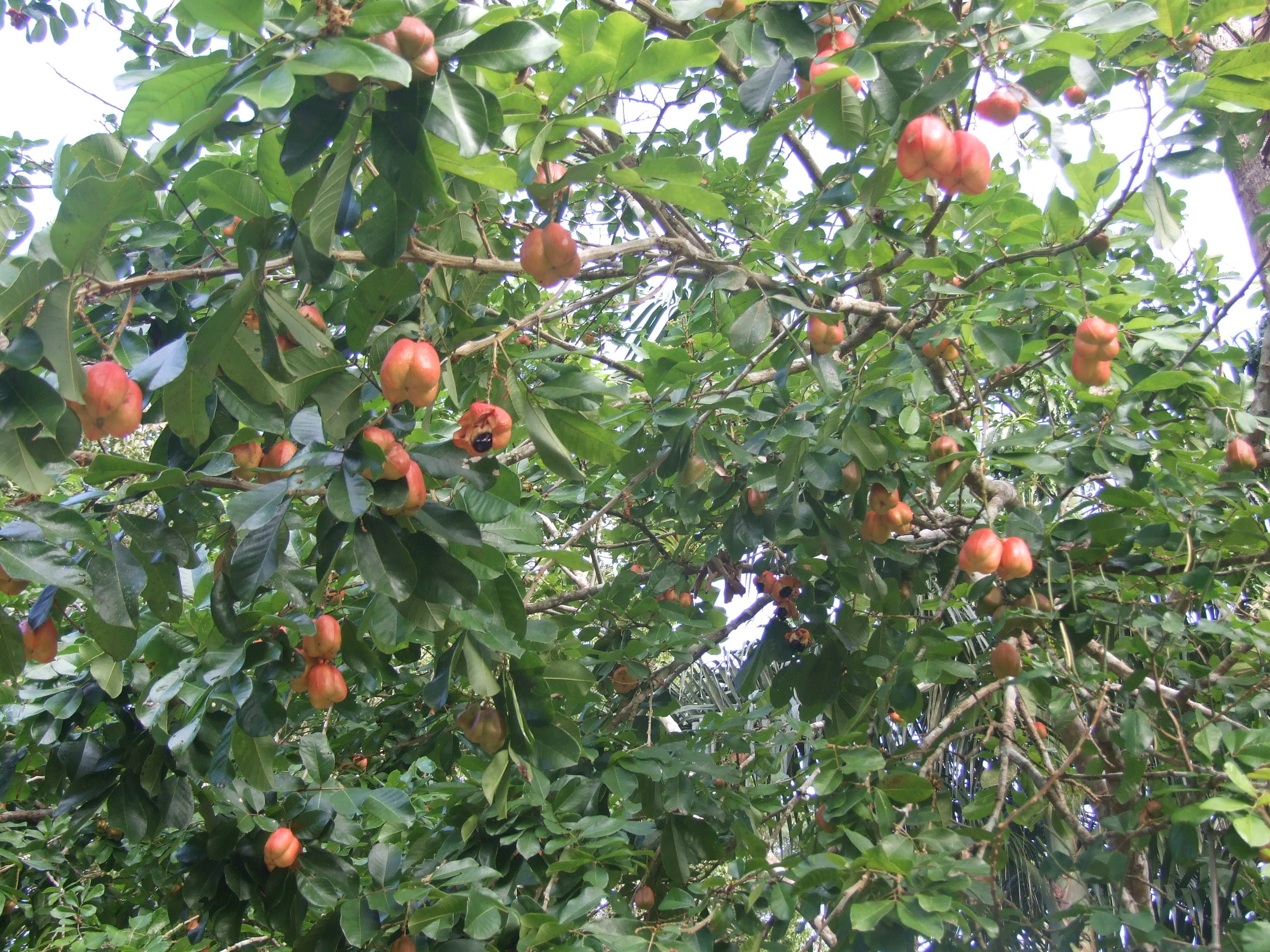Indigenous to Mexico and Central America, Sapodilla (or Chico Sapote) is a traditional food plant of the Mayan and Aztec cultures and the source of chewing gum, or chicle, chewed by the Aztecs in pre-Colombian ties, still used in some commercial gums. The tree has spread to other parts of the tropical world, becoming a minor fruit crop. Although grafted varieties can be managed low, larger trees can reach a height of 20 m. The tree is evergreen and produces round or egg-shaped fruits, which vary in size. Good varieties can be truly incredible. A good Sapodilla tastes like brown sugar, very sweet and slightly gritty like pears.
Sterculia apetala -Panama Tree
Rhamnaceae, Zizyphus mauritiana, Indian Jujube
Jujube is one of the five primary fruits in China, having been cultivated thereabouts for 4,000 some odd years, probably longer. The fruit is very common in parts of Asia, and increasingly so in the Medeterranian. The tree is best adapted to dry tropical climates and can be found throughout the tropics, although it is not very common outside of Asia.
The tree can reach 12 meters in height, although most of the ones I've encountered, propagated by approach grafting, are smaller, sprawling shrubs. In dry, colder areas the tree doesn't typically surpass 4 meters in height.
The Indian Jujube (Z. mauritania) and the Chinese Jujube (Z. jujuba) can be distinguished by the underside of the leaves. The underside of the Indian jujube leaves is covered with an almost cream colored fuzz. The fruit is usually the shape and size of a olive, although improved Chinese varieties can be larger than 6 cm in length. Each fruit contains a stone with two seeds.
The Jujube can be consumed in numerous ways: ripe or unripe, cooked, in sweets and jams, breads, cheeses, and a butter is prepared with the pulp. Juices are also made. In order to dry the fruits, one must wait until the process is initiated on the tree, the fruit ripens, becomes soft and then dries. The soft fruit has a higher concentration of sugars. Dried fruits are common, and can be conserved and consumed like raisins.
The wood is very strong, often used to make agricultural implements, also used to make a top quality charcol. The tree is commonly used as a living fence and windbreak in arid regions. Leaves are used as food for silkworms. The bark is used for tanning. The leaves and fruit are an excellent animal forage.
There are numerous superior grafted varieties of Chinese Jujube, including Lang, Li, Sui Men, Mu Shing hong, and Yu. There are over 125 known varieties of Indian Jujube in India, including "Gola", "Safeda", "Banarsi", and "Haichi".
High quality fruits contain up to 21% sugar, 1.5% protein, and are rich in calcium, fosforo and vitamin C.
The trees can be propagated by seed, approach grafting, cuttings and air layer.
Cactaceae, Lemaireocereus thurberi, Organ Pipe Cactus, Pitaya Dulce
The Pitaya Dulce is another common cactus on the Baja peninsula. The nocturnal flowers are cream colored and bloom at night, closing the following morning. The Cactus bears an excellent spiny fruit about the size of a tennis ball containing sweet, pink flesh, with a flavor reminiscent of watermelon. The fruit pulp can be eaten fresh, or dried in the sun for future consumption. My Baja California field guide by Norman Roberts includes these interesting anecdotes concerning the Pitaya Dulce: That "Missionaries' records indicate the natives were generally hungry except during Pitaya season. Then they gorged on this wild harvest, spending the entire season in a state of euphoria." And that "the Natives defecated at a particular spot on the trail, later gathering their own dried feces to collect the tiny black Pitaya seeds that had passed through their intestinal tract undigested. These seeds were then ground into a meal to be eaten as a pozole. This was called "the second Pitaya harvest". The missionaries were thoroughly disgusted with this harvest and castigated the Aborigines for it." Of course, the missionaries never successfully survived for thosuands of years in this seeminly inhospitable landscape, which doesn't give them much room for criticizing the native inhbitants for their methods of adaptation.
The book then includes a note about the superb daiquiris that can be made from the Pitaya fruit.
The flesh of the Pitaya is traditionally used as snake-bite medicine, applied directly to the afflicted site.

Chrysobalanaceae, Licania platypus, Sansapote, Sonzapote
Bromaliaceae, Ananas comosus, Pineapple, Pina
 Pineapple is technically a perennial herb, native to the lowlands of northern South America. The pineapple has been cultivated thereabouts since pre-Colombian times. It first spread to Central America and was then introduced to the rest of the tropical world by the Portuguese and Spanish.
Pineapple is technically a perennial herb, native to the lowlands of northern South America. The pineapple has been cultivated thereabouts since pre-Colombian times. It first spread to Central America and was then introduced to the rest of the tropical world by the Portuguese and Spanish.
A dry, tropical climate is ideal for Pineapple production. The fruit is very drought-resistant but sensitive to frosts, therefore best grown in lowland regions near the sea. The pineapple has no seed and is propagated by the spiky crown that grows out the top of the fruit.
The fruit contains a mixture of protein-digesting enzymes that is used in treating inflammation and swelling (post-traumatic and post-operative oedemas). The strong leaf fibers are used in the textile industry. In Panama, indigenous populations use the fiber of an undomesticated, longer-leafed, native pineapple variety.
Bombacaceae, Pachira (Bombacopsis) glabra, Saba nut, American chestnut
I have about fifteen trees growing from seed I collected from a few trees I found planted along the street in a middle class neighborhood in San Jose, Costa Rica. In addition to this tree there were tropical olives (Simarouba glauca), citrus and macadamia nuts planted as street trees in the same neighborhood.
It is a small evergreen tree 4-6 m tall. The fruits are semi-woody capsules which stay green even when ripe. A pod contains many edible seeds which can be consumed raw or toasted/roasted/boiled. Considered to be one of the more notable underappreciated tropical food crops.
Like many of the Bombacaceae species P. Glabra has a very fat trunk to store water. Just after germination the girth of the trunk becomes noticeable, almost disproportional to the rest of the tree.
In Brazil the Saba nut is a fruit tree, cultivated as an ornamental in south-eastern areas of the country. It is not very frequent in its natural habitat, the pluvial Atlantic forests from Pernambuco to Rio de Janeiro and the flood plain forests of Para and Maranhao.
Sapindaceae, Blighia sapida, Akee, Seso Vegetal
Akee is native to and widely cultivated on the East coast of Africa. The English brought it from there to their colonies in the Caribbean where it is now well integrated. It is the national fruit of Jamaica.
The tree ranges in height from 10 - 25 meters. The canopy is open and broad. The fruit is a capsule in the form of a pear. When the fruit is ripe it splits open, exposing three shiny black seeds encased in a creamy white colored flesh, which is the part consumed. The fleshy arial has been described as looking similar to a small brain.
Akee is a curious and potentially dangerous fruit. If the unripe fruit is opened and the aril is eaten it can be deadly, or sufficiently poisonous to induce a coma. When picked before it is fully ripe the fruit contains a chemical that limits the body’s ability to release the backup supply of glucose that is stored in the liver. That supply is essential because once the body uses up the sugar immediately available in the bloodstream, an event that usually occurs several hours after eating, it depends on this glucose to keep blood sugar levels normal until the next meal. Without it, blood sugar plunges dangerously. Enough people have died from eating unripened akee to make it illegal to bring the raw fruit into the U.S although that restriction doesn’t apply to canned and properly processed akee.
Symptoms of akee poisoning can include uncontrollable vomiting, dizziness, severe hypoglycaemia, convulsions, coma and even death.
However, if the fruit is left to ripen and open itself, the flesh poses no danger whatsoever. All other parts of the fruit should never be eaten. I remember visiting the Lancetilla botanical gardens Tela, Honduras. In their flier they discuss Akee, giving reference to the wife of the founder to the garden who had the mishap of consuming unripe Akee and, as a result, falling into a coma and eventually dying.
Akee can be eaten fried or boiled, typically with fish or meat. The texture is similar to eggs. A curious fruit indeed.
Akee is considered highly nutritious due to its high content of fats.
The tree thrives in a hot, humid climate and does not support long, dry periods. It is best grown in deep, well drained, soils. Liming is beneficial.
Bombacaceae, Durio zibethinus, Durian
Passifloraceae, Jamaican lilikoi.
I'm growing this on my balcony in Casco Viejo. The flowers just opened up a few days ago, with an incredible scent. I'm hand pollinating them for better fruit set. I think this one has a lot of potential in balcony and rooftop trellis plantings. The fruit is orange and both looks and tastes like a cross between P. edulis and granadilla.




















